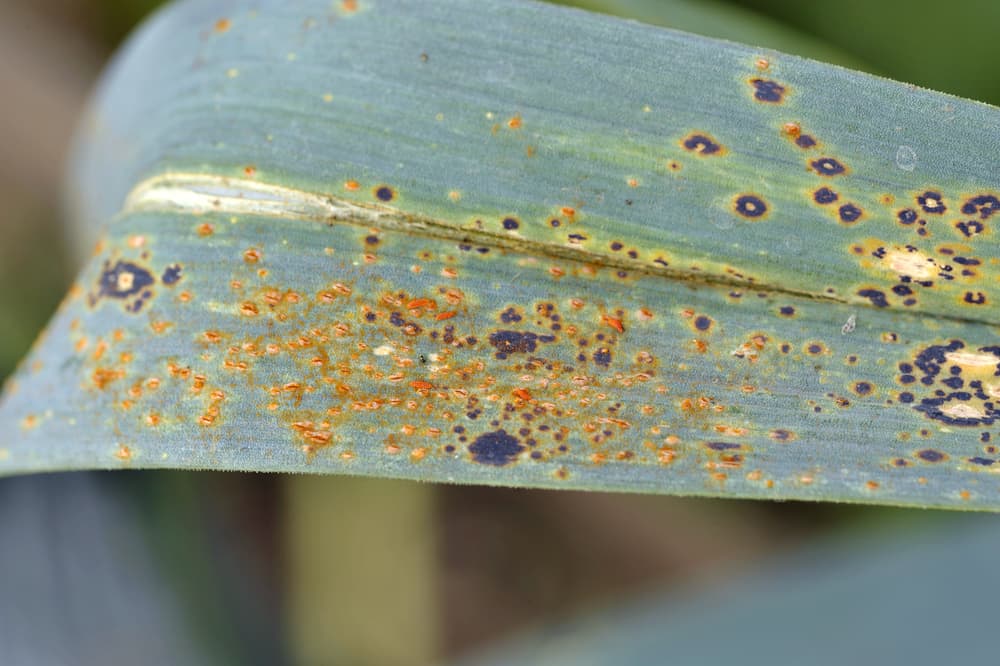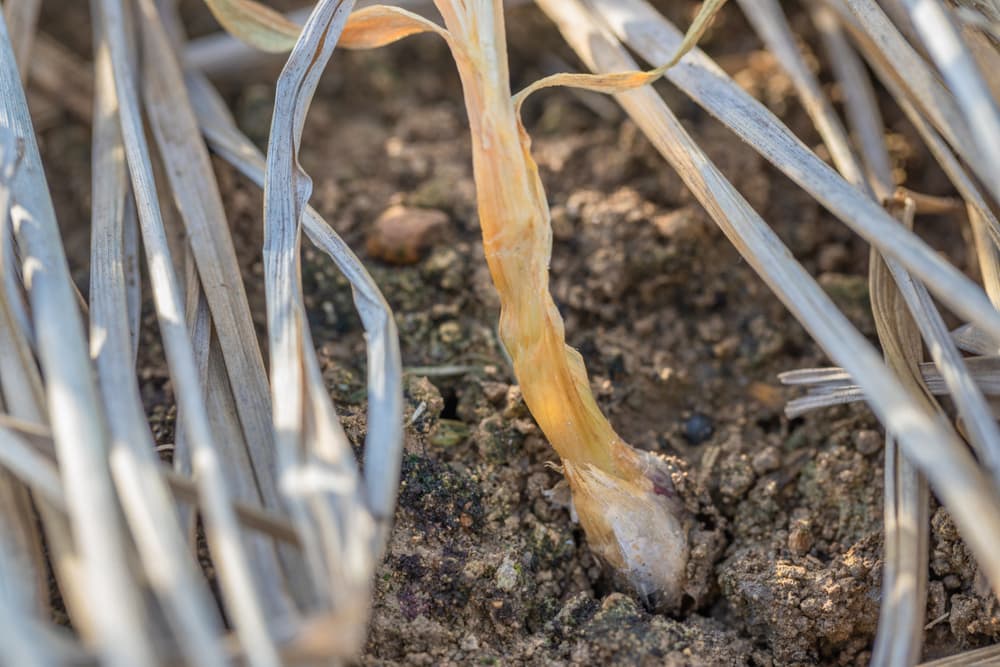VEGETABLES > LEEKS

Elizabeth is a Permaculture Garden Designer, Sustainability Consultant and Professional Writer, working as an advocate for positive change. She graduated from the University of St. Andrews with an MA in English and Philosophy and obtained a Diploma in Applied Permaculture Design from the Permaculture Association.
Reviewed By COLIN SKELLY

Colin is a Horticulturist and Horticultural Consultant with experience in a range of practical and managerial roles across heritage, commercial and public horticulture. He holds the Royal Horticultural Society’s Master of Horticulture award and has a particular interest in horticultural ecology and naturalistic planting for habitat and climate resilience.
Leeks are a common and popular winter vegetable, so you might like to learn how to grow them in your garden.
They are not always the easiest vegetable to grow, and take a lot of time to mature to harvest – but in spite of the investment they require in terms of time, space and effort, they can still be an excellent choice for home growers.
Overview
| Botanical Name | Allium porrum / Allium ampeloprasum |
| Common Name(s) | Leeks |
| Plant Type | Annual Vegetable |
| Native Area | Cultivated |
| Hardiness Rating | H4 |
| Foliage | Spiky leaves, above-ground |
| Flowers | Spherical, elegant blooms – commonly white or purple |
| Harvesting Months | January, February, August, September, October, November, December |
Sunlight
Preferred
Full Sun
Exposure
Sheltered
Size
Height
0.3 – 0.7M
Spread
0.1 – 0.2M
Soil
Preferred
Most fertile soils
Moisture
Moist but well drained
pH
Any
Leeks are a common garden vegetable which is a member of the Allium [AKA the ‘Onion’] family.
Leeks are, of course, a vegetable with a pleasant, mild, onion-like taste.
Most commonly, the white and pale green portions are eaten.

But it is important to remember that the darker green leaves at the top are edible too, and these should also be consumed to avoid waste.1Hunt, T. (2019a, May 11). Go green: don’t let the tastiest part of a leek go to waste. The Guardian. Retrieved March 21, 2023, from https://www.theguardian.com/food/2019/may/11/leek-tops-soup-recipe-food-waste-not-tom-hunt
Though tough, they can be good to sauté or add to a stock.
Aside from the flavour, another good thing about leeks is that they are a vegetable that is harvested in the autumn or winter, when there are fewer fresh vegetables around.
” I love growing leeks, growing different varieties for harvesting between late autumn and early spring,” shares Master Horticulturist Colin Skelly.
“My favourite is the heritage cultivar ‘Giant Musselburgh’, which tastes great and stands even in mild winters without bolting.
“Fantastic in winter soups and far tastier when home-grown. this variety is available in supermarkets.”
This means growing leeks can help you in your efforts to eat food grown in your garden all year round.
Leeks are not only useful for their edible yield – leeks can also be very useful, like other alliums, as companion plants in your garden.
Their strong smell is said to help in repelling or confusing a range of common garden pests – though it must be said that some recent studies have proved inconclusive.2Baudry, X., Doury, G., Couty, A., Fourdrain, Y., Van Havermaet, R., Lateur, M., & Ameline, A. (2021). Antagonist effects of the leek Allium porrum as a companion plant on aphid host plant colonization. Scientific Reports, 11(1). https://doi.org/10.1038/s41598-021-83580-8
Common Varieties
Some good leek varieties for the UK include:
- ‘Autumn Giant Porvite’
- ‘Blauwgroene Winter’
- ‘Bleu de Solaise’
- ‘Cairngorm’
- ‘Krypton’
- ‘Mézières’
- ‘Monstrueux de Carentan’
- ‘Oarsman’
- ‘Porbella’
- ‘Stamford’
However, as well as considering common F1 or heritage leek varieties are commonly grown in an annual vegetable plot, you could also consider growing perennial leeks, like Babington’s Leek (Allium ampeloprasum var. babingtonii).

This is a perennial leek which is found in the wild in the British Isles.
It is a relative of the garden leek which is believed to have predated the introduction of the garden leek.
Typically, bulbs are planted in spring and then left for the first year – the plant is then harvested for its above-ground growth each subsequent year.
The bulb in the ground is left intact and the plant will regrow from the bulb.
Plants left unharvested will flower, produce bulbils, and drop these to create new plants; clumps of these can form in the right conditions.
How To Grow Leeks
Leeks are usually grown in the ground in a garden, but they can also do well in deep raised beds or large, deep containers.
Both typical garden leeks and perennial leeks will do best in full sun but can also be grown in partial shade.

The ground into which garden leeks are planted should be fertile, and rich in organic matter, while the soil should be moist but relatively free-draining.
Crop Rotation
You should also consider, when planning your companion planting schemes, that crop rotation is still the best idea.
Try to include alliums like leeks within a four-year crop rotation plan.
Perennial leeks work very well as companions for strawberries, and other perennial vegetables – again for their strong scent which can confuse or repel a range of pests.
Fruit trees like apple trees will also benefit from having perennial leeks and other perennial alliums planted in their guilds, since the perennial alliums help in repelling pests and may also help prevent apple scab and other fungal issues.
Sowing Leeks
Leeks are a vegetable that takes a long time to mature.
If you want to enjoy eating leeks from your garden in winter, then you need to sow the seeds in late winter or early spring.
Leeks are usually sown in the UK between February (indoors) and April.
See our sowing guide for more information.
Leek Plant Care
Caring for leeks is relatively easy and straightforward.
Simply water during dry periods, and add more mulch over time, or earth up, to encourage the stems to form longer white sections.
Make sure that the mulch remains in place over the summer, and remove any weeds which appear between the plants, since leeks will not be very tolerant of any competition.
There are however certain problems commonly encountered by those growing leeks in their gardens.
Leek Rust
One common issue is leek rust, a fungal infection.
Making sure that the leeks are not overcrowded and avoid watering from above to reduce the chances that fungal problems like this will take hold.

A small rust attack will not kill your leeks, but a more serious attack could reduce your yield.
This disease is difficult to eradicate from the soil once it arrives, so practice crop rotation and avoid growing any members of the allium family in the same bed for the next three years.
Onion White Rot
Crop rotation and good garden hygiene is also crucial in areas where onion white rot is a problem.
This is another fungal infection which can attack leeks.

Take care not to spread soil or plant material from areas that have this soil-borne fungus to other parts of your garden or elsewhere.
References
- 1Hunt, T. (2019a, May 11). Go green: don’t let the tastiest part of a leek go to waste. The Guardian. Retrieved March 21, 2023, from https://www.theguardian.com/food/2019/may/11/leek-tops-soup-recipe-food-waste-not-tom-hunt
- 2Baudry, X., Doury, G., Couty, A., Fourdrain, Y., Van Havermaet, R., Lateur, M., & Ameline, A. (2021). Antagonist effects of the leek Allium porrum as a companion plant on aphid host plant colonization. Scientific Reports, 11(1). https://doi.org/10.1038/s41598-021-83580-8

